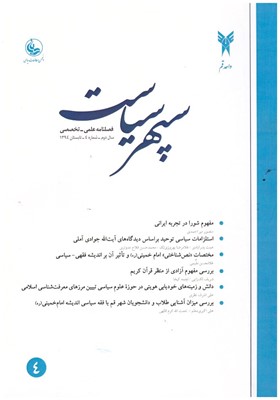مدرنیته، جهانی شدن و فراگیر شدن تروریسم پسامدرن
محورهای موضوعی : سیاست پژوهی ایرانی (سپهر سیاست سابق)سید محسن آل غفور 1 , رضا صادقیان 2
1 - استادیار دانشگاه شهید چمران اهواز
2 - دانشجوی دکتری، دانشگاه آزاد اسلامی واحد شهرضا
کلید واژه:
چکیده مقاله :
In order to understand the terrorism in the age of globalization and the relationship between the two, one needs to consider the changes in the thought framework of modernity. Modernity is not the only element for the appearance of terrorist groups; rather it is one of the major elements for the manifestation of postmodern terrorism. In a general classification, three kinds of terrorism can be perceived: traditional, modern and postmodern terrorisms. The approach of the traditional terrorism varies from the approaches of the modern and postmodern terrorisms. The modern and postmodern terrorisms are the result of changes following the growing trend of modernity and hence the globalization. In all of the activities of these two types, one can notice signs of enmity with globalization; however, the traditional terrorists acted differently. The goals of the traditional terrorists have been limited. However, the modern and postmodern terrorists aim at goals which go beyond outstanding governmental characters. This resembles the modernity thought which does not accept anything which brings about limitation. This article intends to show that the modern and postmodern terrorisms are a reaction to the consequences of modernity and globalization. In other words, the modern and postmodern terrorisms are the products of the modern period and are one of the major crises of modernity and globalization.
_||_

